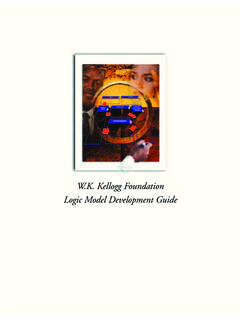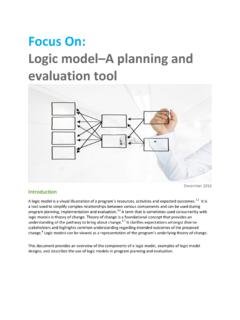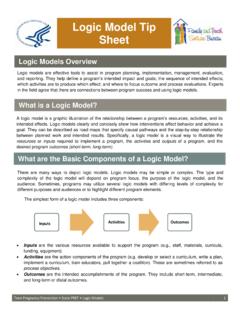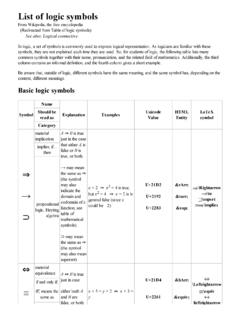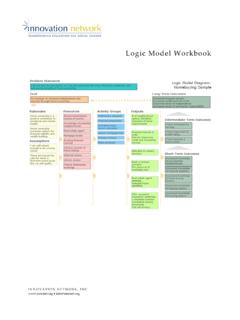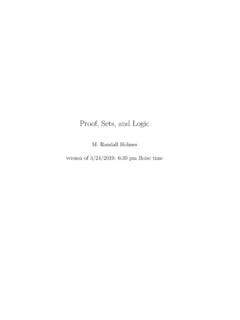Transcription of Your guide to using Logic Models - Home - Midlands and ...
1 Your guide to using Logic of this guide This guide has been commissioned by NHS England, to provide support on Logic modelling. This guide is split into two sections - theory and practical use. The theory sections provides information about the background to Logic modelling, its history, types and principles. The practical section provides templates and tips to help you build your own Logic model. Why use Logic Models ?Major transformational change is being planned and driven forward, to meet the challenges set out in the NHS Five Year Forward View and the ambition for integrated health and care by scale of the challenge means that no organisation will be untouched, every partner whether they are responsible for commissioning or delivery, will be involved.
2 And change at this scale and pace, across whole systems, will inevitably be visible and tangible to the public, patients or service users and their carers. Programmes of change will be set up to fail if the fundamental thinking or design is flawed. A Logic model isn t a magic wand, but it will help with both the thinking and the planning, and help avoid some of the common pitfalls. Logic Models are simple tools which allow a systematic consideration of the key components of any change and the relationships between them and the overall is Logic ? The Logic Model Getting Started Constructing the Model Measurement & EvaluationEnablersResources Video: What are the Benefits Video: What are the Pitfalls Video: Importance of Logic ModelsTheory SectionPractical SectionTheory Section - What is Logic ?
3 Definition and OriginsLogic in the broadest sense refers to a way of thinking that is based on reason and good judgement. It usually refers to thinking that is both valid and sound. It also has a more formal background, as a discipline or school of thought, reaching all the way back to ancient Greece, India and China. The Word itself is greek in originIt even can be described as a science and is studied as part of mathematics and computing, especially calculus and will also be found in the study of philosophy in relation to epistemology (thinking about thinking!). When studied as a formal science it is a system of codification using proof and inference.
4 Where deductive reasoning is being used, for example in making an argument, a proposition or a hypothesis, then Logic is used to provide a systematic consideration of the components - and the links between them. As such, certain principles can be applied, to test the validity and strength of the Logic and therefore the soundness of the overall argument. Definition and Origins The art of thinking and reasoning in strict accordance with the limitations and incapacities of the human understanding Ambrose BierceGood Logic & Bad LogicKey Concept - If ThenSo What? Hypothesis & TheoryIntroductionWhat is Logic ? Theory SectionPractical SectionThe Logic Model Getting Started Constructing the Model Measurement & EvaluationEnablersResourcesTheory Section - What is Logic ?
5 Good Logic Bad Logic There are different kinds of Logic and different kinds of reasoning. There are even laws of Logic which have been developed within the fields of philosophy and mathematics, to help determine what good looks like. If you are interested in more information see the resources section of this guide . But in broad terms much of this can be summarised very simply - by thinking about good and bad Logic . It is often easier to start with bad Logic as this is easy to recognise and identify, in everyday life. Those times when a flawed argument is being put forward, because it is biased, inaccurate, incomplete or generalised.
6 They are sometimes called logical fallacies . A circular argument is a kind of fallacy and easy to fall into. Programmes and projects often build up their own self-insulating Logic . Actions thought to be right at one point may not be right later down the line - but once action is defined in a plan it is often not questioned. Good Logic is the reverse of the above. Where arguments or hypothesis are made with minimal bias, or at least where the bias is recognised and accounted for. And with attention paid to the completeness, consistency, accuracy and context. In the scientific community, findings are subject to some common rules which follow these principles - was a study comprehensive enough and can it be repeated?
7 In Project and Programme work, the principles fit very well with the use of SMART :S Specific M Measurable A Achievable (is it repeatable)R Realistic (is it biased or consistent)T TimedGood Logic , bad Valid and sound Can be reasonably tested and verified Consistency and completeness Follows - sequential an casual Is acceptable as proof Based on a hypothesis / Theory of Change Invalid / negative premise Logical fallacies - do not survive testing Incomplete - Logic gaps Non sequiturs - doesn t follow Not accpetable / cannot be proven Flawed assumptions / ZeitgeistsVideo: Good Logic and Bad LogicDefinition and OriginsGood Logic & Bad LogicWhat is Logic ?
8 Theory SectionPractical Section The Logic Model Getting Started Constructing the Model Measurement & EvaluationEnablersResourcesIntroductionK ey Concept - If ThenSo What? Hypothesis & TheoryTheory Section - What is Logic ? Then This is a key concept in Logic - and right at the heart of Logic modelling. At its simplest, this is the crucial link between the components of any argument. If I do then I will get this. If this then that will happen. If I get some milk then I can have a white coffee today If I leave work on time then I can go for a swim If I have time to finish this report then I will meet the deadline When we make a statement like this we have an end goal in mind - and pick out the activities that are going to make it happen.
9 When used in programme planning and evaluation, the if then construct makes the link between the resources and activities used and the benefits expected: Certain resources are needed to operate your program. If you have access to them, then you can use them to accomplish your planned activities. If you accomplish your planned activities, then you will, it is hoped, delivery the amount of product and / or service that you intended. If you accomplish your planned activities to the extent intended, then your participants will benefit in specific ways. If these benefits to participants are achieved, then certain changes in organisations, communities or systems might occur under specified conditions.
10 WK Kellogg Foundation - Logic Model Development guide 2004If x then yThe basis of Logic LogicThe if tells you this is about conditionality, and is related to probability - it is about creating a model of reality. This can be measured and tested/evaluated (but it s not an exact calculation). Then describes the effects you intent to have by doing the things you define in if . These are the measurable outputs and products - as well as the wider impacts, outcomes and system : If X Then YKey Concept - If ThenWhat is Logic ? Theory SectionPractical Section The Logic Model Getting Started Constructing the Model Measurement & EvaluationEnablersResourcesIntroductionS o What?
